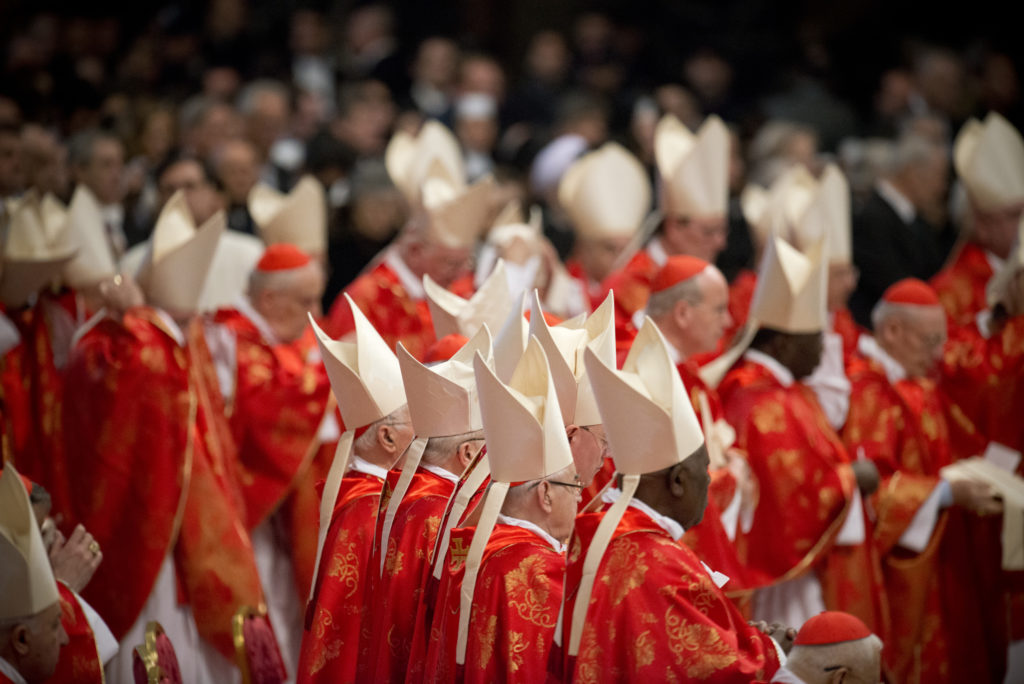ROME — As rumors swirl about possible changes by Pope Francis to the rules governing the election of his successor, it’s worth recalling that whatever the truth may be, he’s hardly the first pope to either consider or actually execute revisions to the conclave process.
Indeed, almost 50 years ago a different pope contemplated an arguably even more sweeping change to the election process, although he didn’t live to make it happen.
To begin with current events, two conservative American Catholic news sites (The Pillar and The Remnant) reported Nov. 4 that 81-year-old Italian Cardinal Gianfranco Ghirlanda, a veteran canon lawyer, has been tasked by Pope Francis with preparing changes to conclave rules.
According to those reports, the idea would be to eliminate cardinals over 80 years old from the General Congregation meetings that precede a papal election and also to modify the format of those meetings to limit speeches to the whole group in favor of smaller roundtable discussions akin to the recent Synod of Bishops on Synodality.
There were also suggestions that Francis might be considering involving laity in those General Congregation meetings, which are viewed as critical to shaping the thinking of the cardinals who will elect the next pope.
One of the reports went even further, alleging that the pope also is considering including laity and religious in the conclave itself, allowing them to cast 25% of the votes, with the cardinals constituting the remaining 75%.
Frankly, it’s hard to know what to make of any of this, given that Ghirlanda has issued a seemingly comprehensive denial that he’s been asked to prepare any such changes, calling the reports “absolutely false.”
To unpack it all, we should begin with the fact — not rumor, not speculation, but fact — that three of the four popes who preceded Francis issued their own changes to conclave rules, so the idea that the current pope might be considering doing something similar hardly would be a thunderbolt.
Pope Paul VI excluded over-80 cardinals from the conclave and fixed the total number of electors at 120, even if that restriction has been more honored in the breach than the observance by subsequent popes when they held consistories to create new cardinals.
Pope John Paul II then issued his own rules in 1996, which, among other things, allowed for the possibility that if a conclave were to be deadlocked after roughly 34 rounds of voting, a pope could be elected by a simple majority rather than a two-thirds threshold. In turn, Pope Benedict XVI put out a decree in 2007 that eliminated that provision, thus reinstating the absolute requirement of a two-thirds consensus.
So, the basic takeaway is that if Francis decides to tinker with the rules, he’d hardly be going where no pope has gone before. On the contrary, he’d simply be continuing a process that has been underway for a half-century.
Under the heading of “paths not taken,” it’s also worth recalling that even radical reform of the electoral process is not without recent precedent.
In 2021, veteran Polish-born Italian journalist Gian Franco Svidercoschi published a memoir entitled “Un Concilio e sei Papi” (“A Council and Six Popes”), which was a stroll down memory lane of his remarkable career covering the Vatican. He started out in 1959 with the Italian news agency ANSA, covering among other things the Second Vatican Council, and reported on every pope from John XXIII to Francis. For much of that time he was the assistant editor of L’Osservatore Romano, the official Vatican newspaper.
In the book, Svidercoschi revealed that Pope John Paul I, the “smiling pope” of 33 days, had confided in him that he wanted to make changes to the conclave process.
To begin with the banal, John Paul I felt that cardinals needed more dignified lodgings for the conclave.
In 1978, they still slept in various rooms in the Apostolic Palace, which created the disedifying spectacle of elderly Princes of the Church waking in the middle of the night needing to use the bathroom, only to find one of the few facilities located down a lengthy marble corridor already occupied. Oral tradition has it that the groans of those frustrated cardinals could be heard echoing through the palace.
“You can’t enclose 100 people, many of them elderly, in such a restricted space, forcing them to sleep on an iron cot and cleaning up with a basin and a jug of water,” Svidercoschi quoted John Paul I as saying.
That reform was enacted by John Paul II, who built the Santa Marta residence in part to make sure that the cardinals who elected his successor would stay in rooms that had their own private facilities.
More substantively, Svidercoschi disclosed that John Paul I wanted to include the elected presidents of episcopal conferences in the conclave alongside the cardinals, so that “the suffrage will have a more universal and complete value.”
At one level, it’s possible to argue that John Paul I’s reform would have been less radical than the purported change under consideration by Francis, in that it still would have involved bishops rather than laity.
On the other hand, there are more than 100 episcopal conferences in the Church, meaning that the percentage of non-cardinal electors under such a system would have been much higher than the 25% supposedly envisioned by the unconfirmed revision attributed to Francis.
Bottom line: We’ll have to wait and see if Francis actually adopts the alleged reforms suggested in recent reports, despite vigorous denials. Even if he does, however, nobody will be able to suggest it’s some kind of personal caprice, because we’ve been down this road before.

